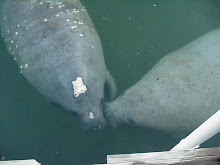The Colonel and I are originally form Central Indiana. We have not seen or know much about Southern Indiana. So, when we were driving back to Florida in late May of this year, after visiting my family, we decided to stop at a few places in Southern Indiana to see what they had to offer us.
It turns out they had plenty to offer us...plenty of history. Right up our alleys!
Our first stop was a quick, off-the-highway stop at the Pigeon Roost Massacre State Historic Site near Underwood, Indiana.
Pigeon Roost was established in 1809. The town was named Pigeon Roost because of the great number of Passenger Pigeons that once lived in the area. The settlement consisted of a single line of cabins stretching north and south about one mile east of the present town of Underwood. The cabin below is a replica.
On September 3, 1812, a war party of Native Americans (mostly Shawnee, but possibly including some Delaware and Potawatomi) made a surprise attack on the village. Twenty-four settlers, including fifteen children, were massacred. Two children were kidnapped and one family managed to escape. Only four of the Indian attackers were killed.
The raid was the first Indian attack in Indiana during the War of 1812. The Pigeon Roost settlement was rebuilt, but then eventually abandoned. Most of the victims were buried in a mass grave.
From the former Pigeon Roost we made our way to Squire Boone Caverns and Village in Mauckport.
Squire Boone was younger brother to Daniel Boone. We have heard of Daniel's adventures but not much of Squire's. I read a book about him and he seems to have been quite the adventurer and saved Daniel's bacon on a couple of occasions.
Squire had his run-ins with the local Indians. He was once hit in the head by a tomahawk which nearly split his skull in two. After he was struck by the tomahawk, he ran back to the fort, holding his skull in one piece as he ran. He also was shot by arrows many times and had one of his upper arms shattered by an arrow; his arm healed but was shorter than the other one.
In 1790, Daniel and Squire Boone discovered the caverns in Mauckport. Later Squire escaped a band of hostile Indians by swinging Indiana Jones-like into a cavern and hiding there until the danger passed. From that day on, he considered the beautiful valley by the caverns to be holy ground. He eventually settled here with his wife, four sons and their families.
Squire built a mill in the early 1800's and on one of the foundation stones he carved this inscription: "My God my life hath much befriended, I'll praise Him till my days are ended."
Upon his death in 1815, Squire Boone was laid to rest within his beloved cave as he had requested.
The Colonel and I took a one-hour cavern tour. Our guide was a descendant of the Boone family. There are a lot of Boones still in the Mauckport area. There are also many Lincolns in the area because a cousin of Squire Boone married John (great-grandfather of Abraham Lincoln) Lincoln's sister.
The Squire Boone Caverns were different from Mammoth Cave. They were a wet cave system with many formations. We saw many stalactites and stalagmites. We also saw a formation called a "Fried Egg".
Here are some pictures of the impressive cavern formations The Colonel and I saw during our tour.
As stated earlier, Squire Boone was buried in his beloved cavern. His remains were moved from that cavern to the cavern that hosts the tour. They were moved to preserve them and keep them safe. A new coffin was built to hold his skeletal remains, as the one he was originally buried in had rotted away.
We saw Squire Boone's coffin. It was sitting alongside the path of the tour. We could have reached out and touched it (you know I wanted to).
The Colonel and I saw more of Southern Indiana's history before we crossed the Ohio River into Kentucky, but the telling of that will have to wait until another post (or this one would go on for too long and I do not wish to tire you, my dear reader).









































































